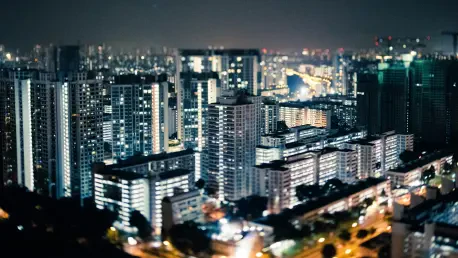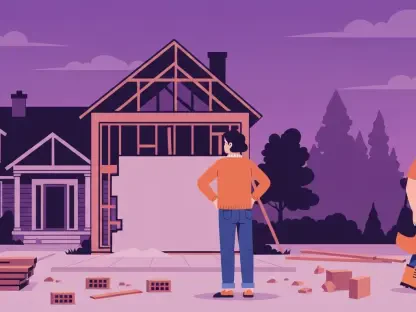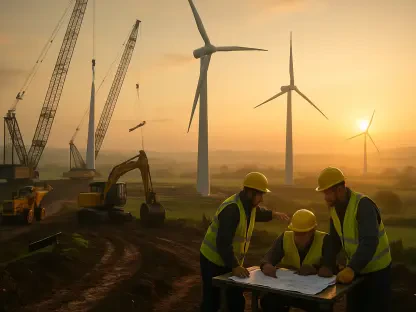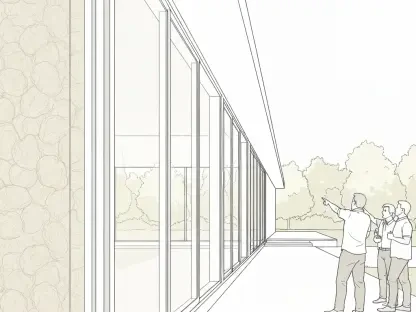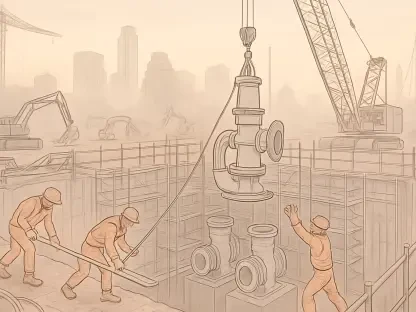In the past decade, Detroit has been at the forefront of urban renewal, reimagining its landscapes with cutting-edge smart technologies while preserving its historical legacy. The city’s journey from a post-industrial decline to becoming a leader in smart urban development exemplifies a unique blend of technological integration and cultural preservation. Central to Detroit’s transformation is its strategic focus on harnessing innovative technologies to overhaul its urban infrastructure, thereby setting a benchmark for other cities aspiring to similar revitalizations. Through smart building technologies, centralized data systems, and collaborative ecosystems, Detroit stands as a pioneering model in creating resilient, intelligent urban landscapes.
Technological Integration in Urban Management
Legacy Meets Innovation
Historically, Detroit has been known for its iconic architecture, and recent technological advancements have breathed new life into these landmarks. Buildings like the Book Tower illustrate this transformation by seamlessly integrating KODE OS, a state-of-the-art operating system, into its historic framework. The ability to control HVAC, lighting, and other building systems from a single platform characterizes Detroit’s innovative approach. This melding of old-world architecture with modern technology serves as a testament to the city’s commitment to preserving its heritage while adopting future-ready solutions.
The integration of smart technologies does not stop at aesthetic improvements. Functionality is a key component of Detroit’s urban redevelopment. The Hudson’s Detroit project epitomizes this synthesis, as its 49-story mixed-use design incorporates advanced systems from inception, ensuring optimized energy use and efficient management. As a flagship development, it emphasizes the transformative role technology plays in the urban landscape, making these structures not just buildings but integral parts of a smart city ecosystem. This forward-thinking philosophy marks a critical shift from traditional building practices to a more sustainable urban engineering paradigm.
Building a Technological Hub
Detroit’s emergence as a technological hub is underpinned by its robust digital infrastructure, notably bolstered by Rocket Fiber. Established in 2014, Rocket Fiber has been instrumental in laying the groundwork necessary for supporting the city’s aspirations as a tech leader. High-speed internet and digital connectivity ensure that Detroit’s smart buildings operate at full capacity, facilitating seamless integration and innovation. These developments underscore the importance of foundational digital infrastructure in fostering urban technology ecosystems, enabling cities to host cutting-edge solutions and attract tech-savvy populations.
Further emphasizing Detroit’s commitment to becoming a technological hub is the strategic deployment of predictive analytics and centralized command centers. Companies like KODE Labs are spearheading efforts to centralize management of multiple buildings through sophisticated data systems. By uniting disparate building management systems under one roof, real-time data insights and predictive analytics enhance energy efficiency and tenant experiences. These practices not only exemplify technological prowess but also redefine how urban environments can be managed, highlighting the potential for data-driven insights to revolutionize city planning and operations.
Reviving Heritage with Smart Solutions
Historic Preservation through Modern Capabilities
Preserving cultural heritage while embracing modern innovations is a cornerstone of Detroit’s redevelopment model. The city has restored numerous historic structures, integrating smart technologies to enhance functionality without compromising historical essence. One notable example is the Michigan Central train station, a project revitalized by Ford Motor Co. The $950 million redevelopment transformed it into a beacon of innovation, employing sensors, adaptive systems, and comprehensive Wi-Fi infrastructure. This project exemplifies Detroit’s dedication to maintaining its historic identity while setting new standards for modern urban living.
Detroit’s strategic use of technology in its preservation efforts extends beyond individual buildings. Large-scale urban redevelopment projects are carefully coordinated to respect architectural history while embedding smart capabilities. The Michigan Central project is part of a broader effort to regenerate Detroit’s urban core, bolstered by extensive public and private partnerships. Investment in technologies that enhance building management and energy use showcases a holistic approach to urban redevelopment. This collaboration is indicative of how cities can successfully balance preserving cultural legacies with implementing future-focused initiatives.
Supportive Ecosystems for Urban Technology
The establishment of platforms like the Urban Tech Xchange (UTX) reflects Detroit’s commitment to nurturing urban technology ecosystems. Launched in 2023, UTX provides a live testing environment for startups and tech partners, fostering innovation through real-world applications. Partnerships with companies like Bosch and Cisco, along with civic involvement, create a collaborative hub for developing and implementing breakthrough urban solutions. This proactive environment not only supports tech growth but also integrates technological advancements into the city’s broader urban strategy.
The broader implication of UTX and similar initiatives is their role in setting Detroit apart as a testing ground for urban tech advancements. By creating a supportive ecosystem, Detroit encourages the symbiotic growth of technology and real estate development. This dynamic fosters a sense of community among innovators, providing opportunities for startups to trial new solutions with practical impact. It demonstrates the potential of cityscapes that leverage technological ingenuity while fostering an ecosystem conducive to continuous improvement and collaboration.
Global Implications and Future Considerations
Lessons for Urban Development
Detroit’s journey offers invaluable lessons for global urban development strategies. Its approach underscores the efficacy of embracing technological ecosystems as a catalyst for change. By prioritizing tech integration, the city facilitated a sustainable urban transformation that other cities can emulate. The synthesis of historic preservation with contemporary enhancements has proven effective in balancing the past with future potential. Such strategies emphasize the importance of not only embracing modernization but doing so with respect to the unique cultural and architectural identities involved.
Detroit’s transformation also illustrates the significance of robust digital infrastructure in supporting smart city ecosystems. High-speed internet and reliable connectivity are foundational for deploying smart technologies at scale, ensuring that data-driven insights are accessible across various operational sectors. By investing in these elements, cities can enable continuity in technological advancements, ensuring long-term resilience and efficiency. Detroit’s trajectory serves as a case study on how comprehensive planning, technological investment, and cultural sensitivity can collectively drive successful urban renovation.
Future Trajectories in Urban Innovation
Over the last ten years, Detroit has emerged as a leader in urban renewal, combining modern smart technologies with a commitment to preserving its rich historical legacy. Once known for its post-industrial decline, the city now represents a unique fusion of technological advancements and cultural heritage preservation. Detroit’s transformation centers on the strategic use of innovative technologies to revamp its urban infrastructure, offering a model for other cities aiming for revitalization. By employing smart building technologies, centralizing data systems, and encouraging collaborative ecosystems, Detroit has set the standard in crafting resilient and intelligent urban environments. This evolution not only rejuvenates the city’s landscape but also sets a pioneering example for others seeking to blend past with present in their urban development. The result is a dynamic metropolis that balances innovation with tradition, paving the way for a future where cities can thrive without losing their historical character.
